Introduction
In the competitive world of Software as a Service (SaaS), customer loyalty is the lifeblood of sustainable growth. As acquisition costs rise and markets become saturated, retaining existing customers and turning them into brand advocates has never been more crucial. This is where SaaS loyalty programs come into play, offering a strategic approach to nurture customer relationships, drive engagement, and ultimately, boost your bottom line.
But what exactly makes a SaaS loyalty program effective? How can you design a program that not only retains customers but also turns them into passionate advocates for your brand? In this comprehensive guide, we'll explore innovative SaaS loyalty program examples, dissect their key components, and provide actionable insights to help you create a loyalty strategy that sets your business apart.
Table of Contents
- Understanding SaaS Loyalty Programs
- Key Benefits of Implementing a SaaS Loyalty Program
- Essential Elements of Successful SaaS Loyalty Programs
- 14 Innovative SaaS Loyalty Program Examples
- Designing Your SaaS Loyalty Program
- Measuring the Success of Your Loyalty Program
- Common Pitfalls to Avoid
- Future Trends in SaaS Loyalty Programs
- Conclusion
Understanding SaaS Loyalty Programs
SaaS loyalty programs are structured initiatives designed to reward and incentivize customers for their continued use and engagement with a software product or service. Unlike traditional loyalty programs that might focus solely on purchases, SaaS loyalty programs often encompass a broader range of customer behaviors and interactions.
These programs aim to:
- Encourage regular product usage
- Incentivize feature adoption
- Promote account upgrades
- Foster community engagement
- Drive referrals and word-of-mouth marketing
By aligning rewards with behaviors that drive value for both the customer and the company, SaaS loyalty programs create a win-win scenario that strengthens the customer-company relationship.
Key Benefits of Implementing a SaaS Loyalty Program
Implementing a well-designed loyalty program can yield significant benefits for SaaS companies:
-
Increased Customer Lifetime Value (CLV): Loyal customers tend to stay longer, upgrade more frequently, and generate more revenue over time.
-
Reduced Churn: By providing ongoing value and recognition, loyalty programs can significantly decrease customer attrition rates.
-
Lower Customer Acquisition Costs: Referrals from satisfied customers can be a cost-effective way to acquire new users.
-
Enhanced Customer Insights: Loyalty programs provide valuable data on customer preferences and behaviors, enabling more personalized experiences.
-
Competitive Differentiation: A unique loyalty program can set your SaaS product apart in a crowded market.
-
Improved Product Adoption: Rewards for feature usage can encourage customers to explore and utilize more of your product's capabilities.
-
Stronger Brand Advocacy: Loyal customers are more likely to become vocal advocates for your brand, amplifying your marketing efforts.
Essential Elements of Successful SaaS Loyalty Programs
To create an effective SaaS loyalty program, consider incorporating these key elements:
-
Clear Value Proposition: Communicate the benefits of participation clearly and compellingly.
-
Seamless Integration: Ensure the program is easy to understand and participate in within your product's user interface.
-
Relevant Rewards: Offer incentives that align with your customers' needs and preferences.
-
Multiple Engagement Opportunities: Reward various behaviors beyond just monetary spend, such as product usage, feature adoption, and community participation.
-
Tiered Structure: Implement levels or tiers to encourage ongoing engagement and provide aspirational goals.
-
Personalization: Tailor rewards and experiences based on individual customer preferences and behaviors.
-
Gamification Elements: Incorporate progress bars, badges, or challenges to make participation more engaging and fun.
-
Community Building: Foster connections between customers through exclusive events, forums, or user groups.
-
Regular Communication: Keep participants informed about their status, available rewards, and program updates.
-
Continuous Optimization: Regularly analyze program performance and gather feedback to refine and improve the offering.
14 Innovative SaaS Loyalty Program Examples
Let's explore some creative SaaS loyalty program examples that effectively drive customer engagement and retention:

1. Dropbox: Space Race
Dropbox's "Space Race" program incentivized users to invite friends and complete specific actions to earn additional storage space. This gamified approach not only drove referrals but also encouraged users to explore more features of the platform.
Key Takeaway: Align rewards with your core product offering to enhance the user experience.
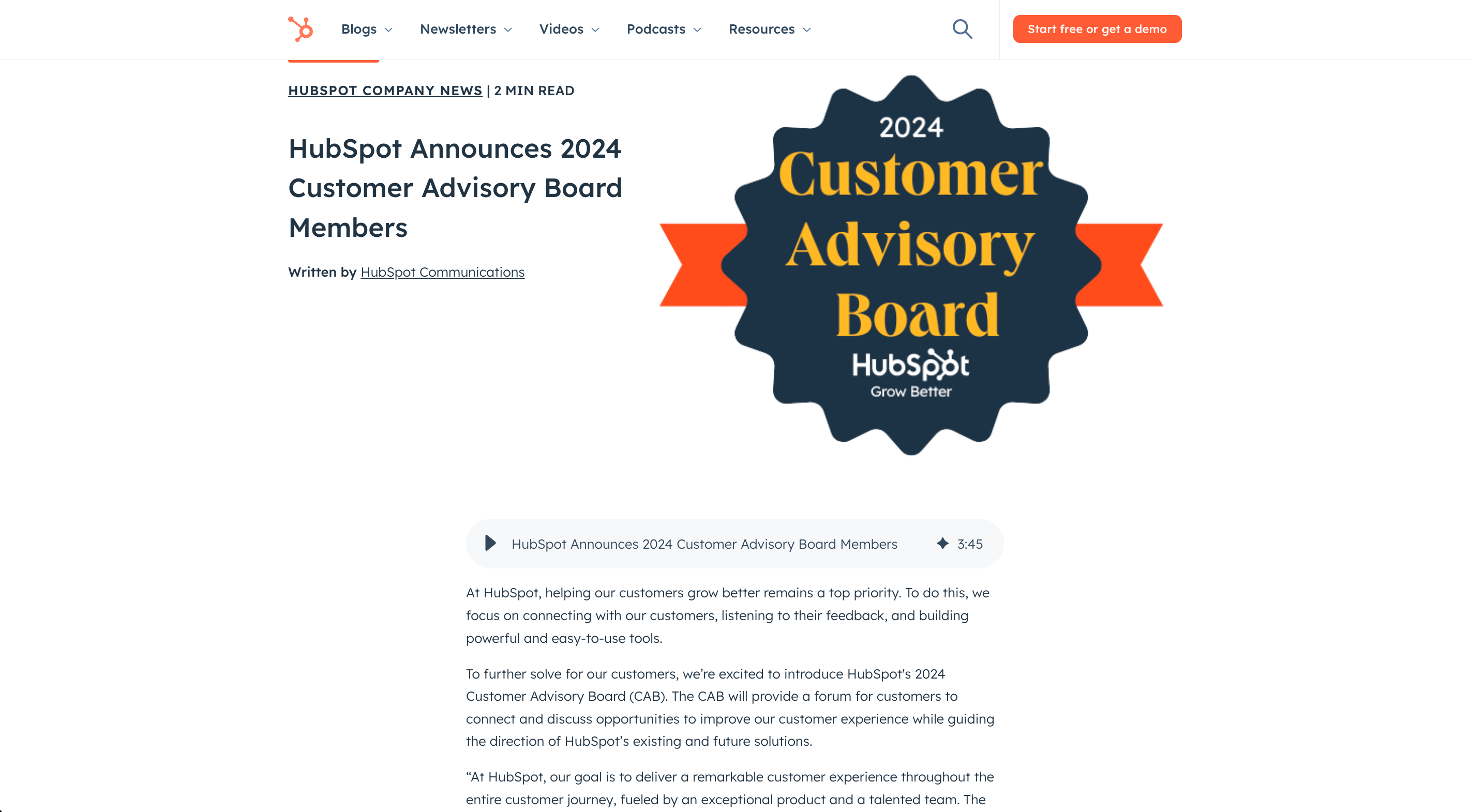
2. HubSpot: Customer Advisory Board
HubSpot's Customer Advisory Board invites select customers to provide feedback on product development and strategy. This exclusive program makes participants feel valued and provides HubSpot with invaluable insights.
Key Takeaway: Create opportunities for your most loyal customers to have a voice in your company's direction.
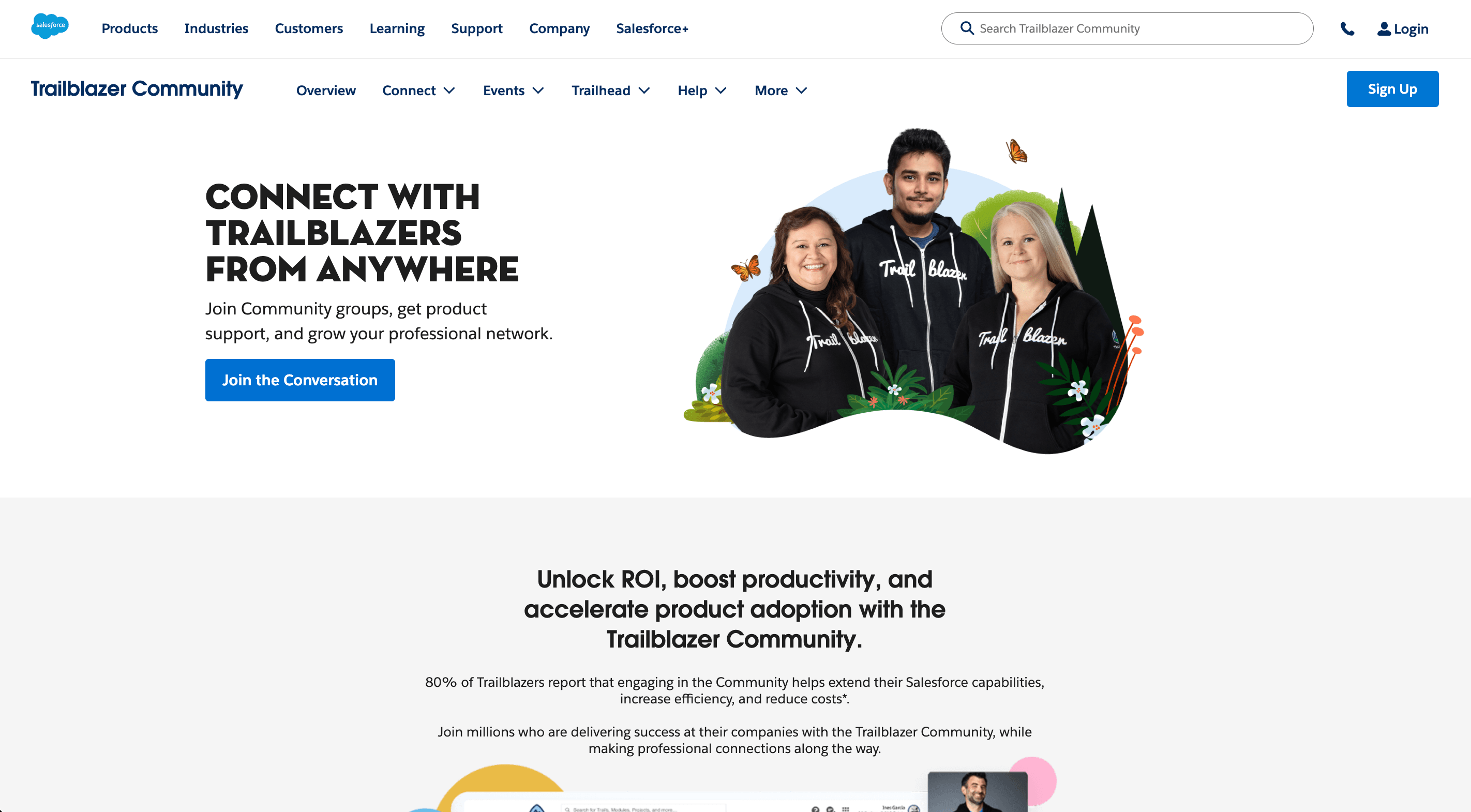
3. Salesforce: Trailblazer Community
Salesforce's Trailblazer Community rewards users for learning new skills, earning certifications, and contributing to the community. Participants earn badges and recognition, which can enhance their professional profiles.
Key Takeaway: Encourage skill development and community engagement to create a more invested user base.
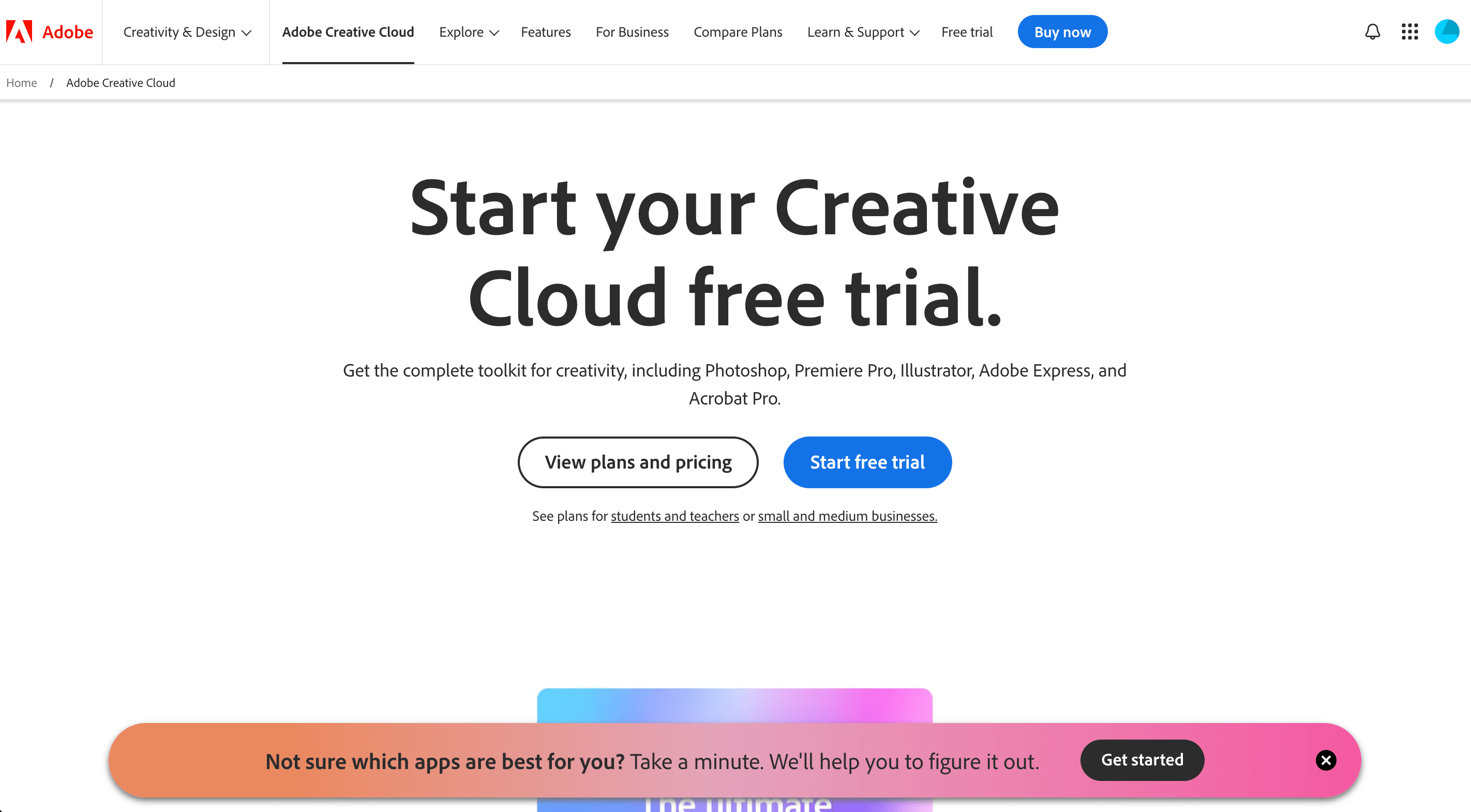
4. Adobe: Creative Cloud Rewards
Adobe offers Creative Cloud subscribers exclusive access to beta features, learning resources, and discounts on Adobe products and partner offerings.
Key Takeaway: Provide value-added benefits that enhance the overall product experience and ecosystem.

5. Slack: Slack Certified
Slack's certification program allows users to become "Slack Certified" by completing courses and exams. This not only encourages product mastery but also creates a pool of knowledgeable users who can advocate for the platform.
Key Takeaway: Empower users to become product experts, creating a network of brand ambassadors.
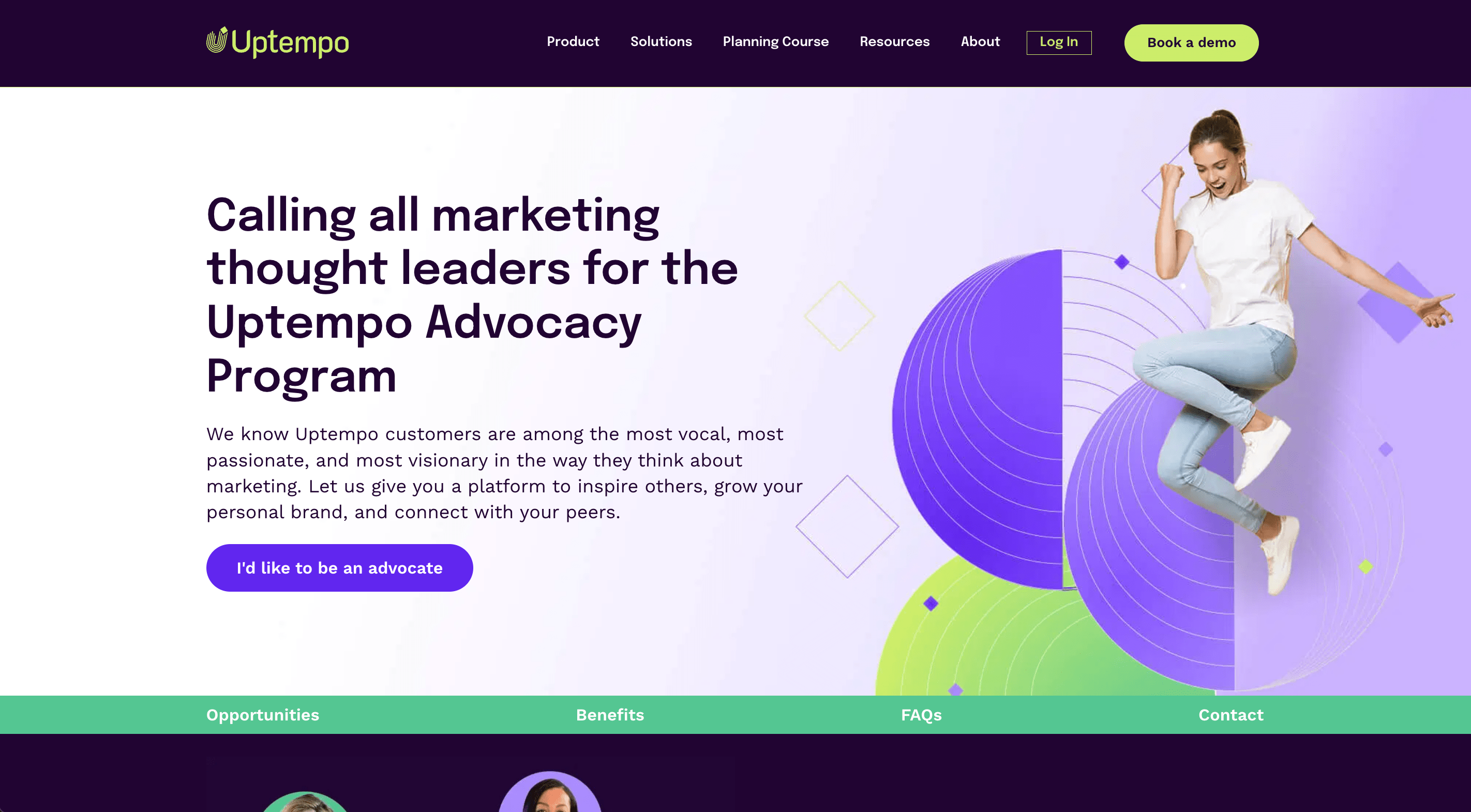
6. Uptempo: Advocacy Program
Uptempo's Advocacy Program encourages users to participate in various community activities such as testimonials, case studies, and referrals. This program strengthens user connections and showcases authentic customer stories.
Key Takeaway: Leverage customer success stories to build trust and credibility.
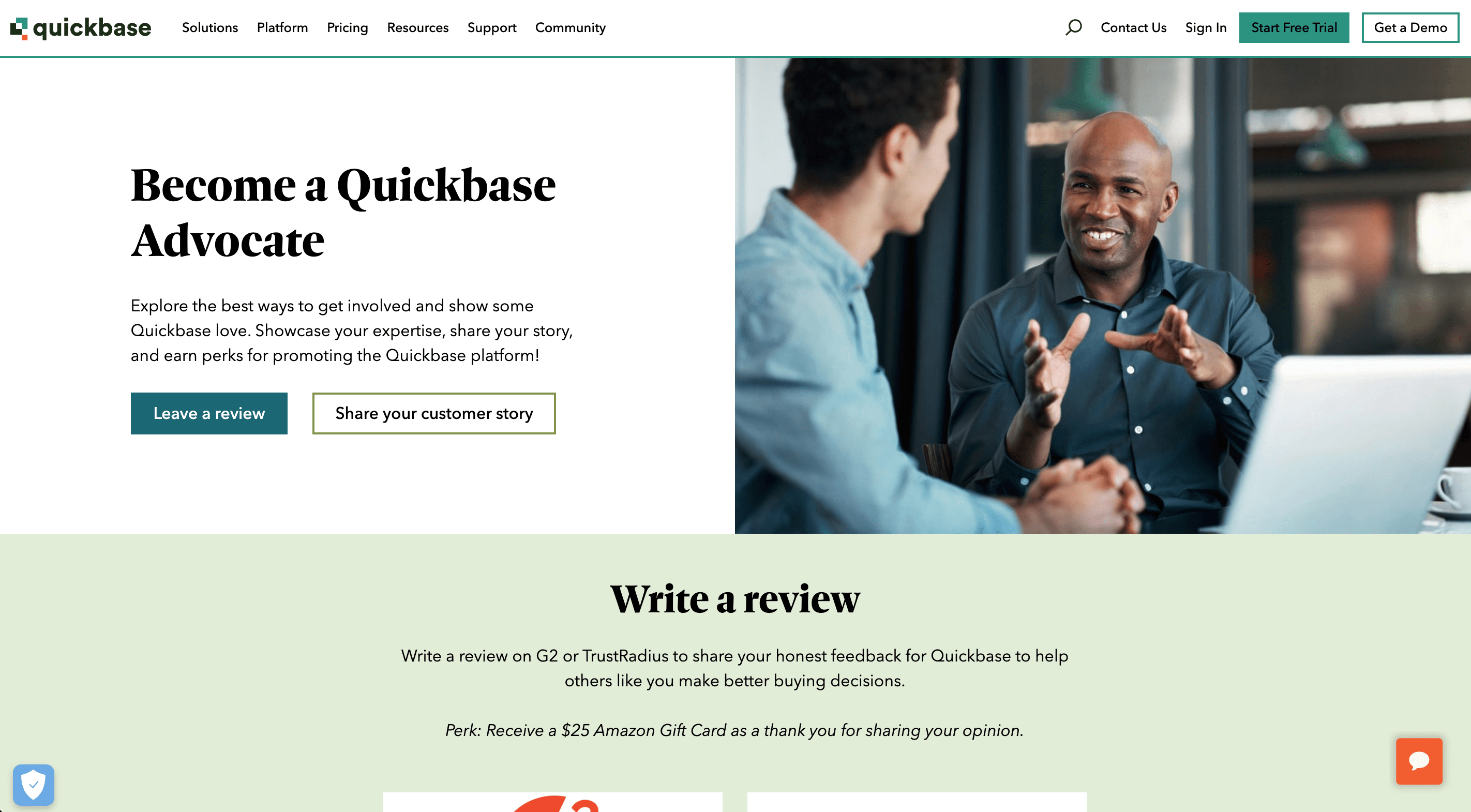
7. Quickbase: Community Advocacy
Quickbase's Community Advocacy program offers users opportunities to speak at events, provide product feedback, and share case studies. This initiative fosters a collaborative environment and highlights customer achievements.
Key Takeaway: Facilitate customer participation to create a sense of community and shared success.
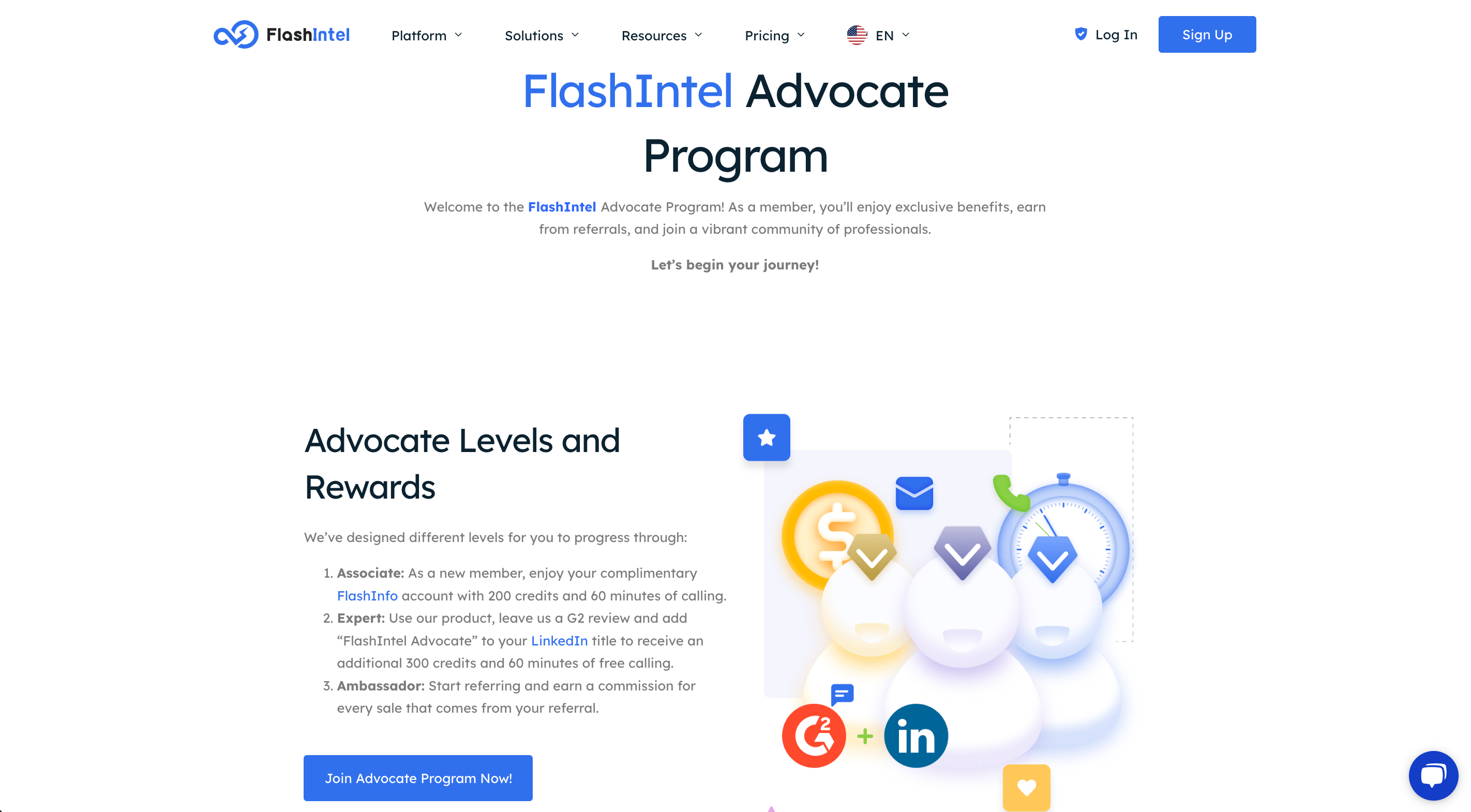
8. FlashIntel: Advocate Program
FlashIntel’s Advocate Program allows users to earn rewards through referrals, testimonials, and social media engagement. By gamifying the advocacy process, FlashIntel not only incentivizes participation but also increases brand visibility.
Key Takeaway: Use gamification to make advocacy fun and rewarding for users.
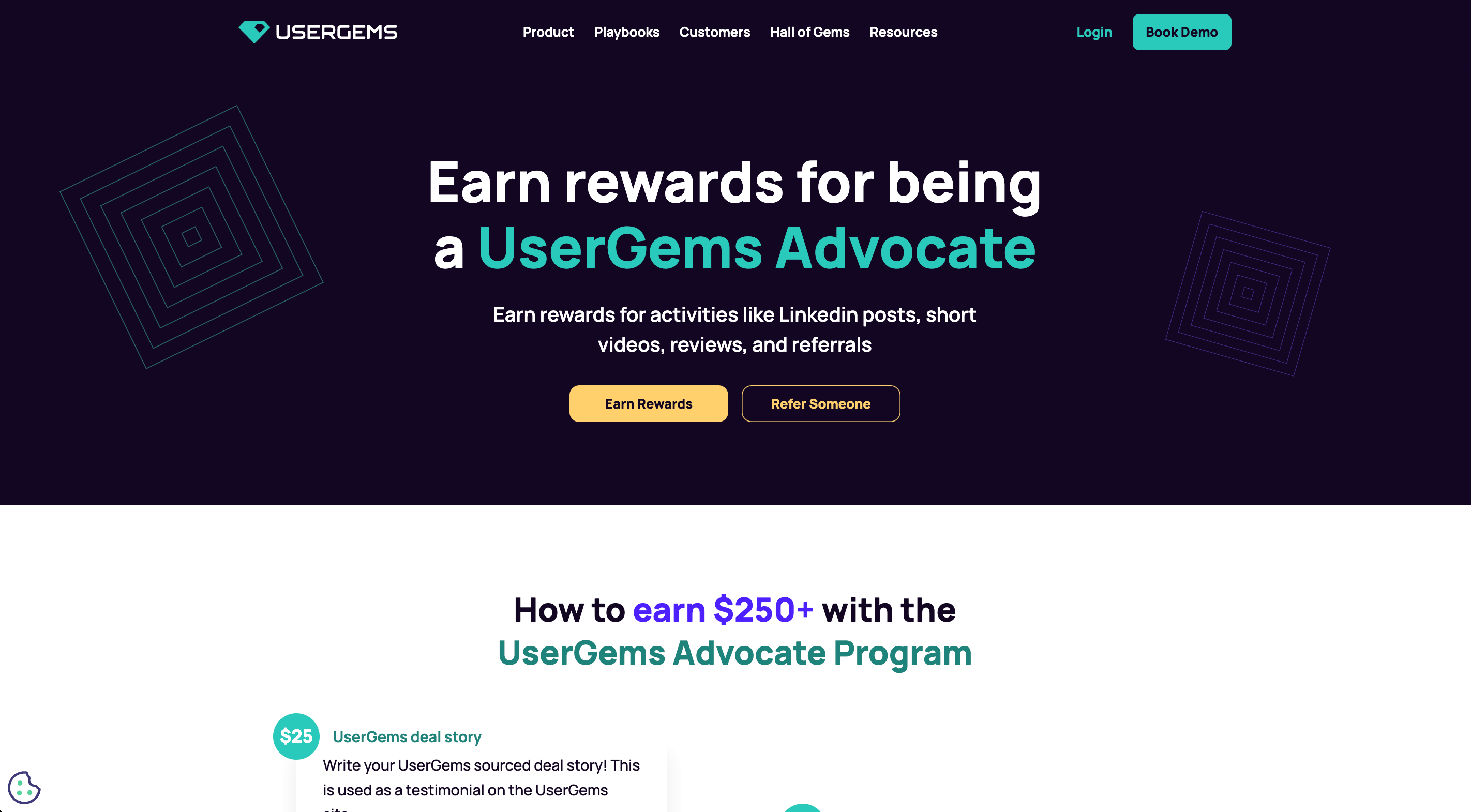
9. UserGems: Advocacy
UserGems' Advocacy program engages its users through testimonials, referrals, and social media challenges. Participants are recognized and rewarded for their contributions, creating loyal and active brand advocates.
Key Takeaway: Recognize and reward customer contributions to foster loyalty and engagement.

10. Bynder: Customer Advocacy Program
Bynder's Customer Advocacy Program allows users to share success stories, participate in case studies, and join advisory boards. This program elevates customer voices and provides valuable feedback for continuous improvement.
Key Takeaway: Create structured programs that give customers a platform to share their experiences.
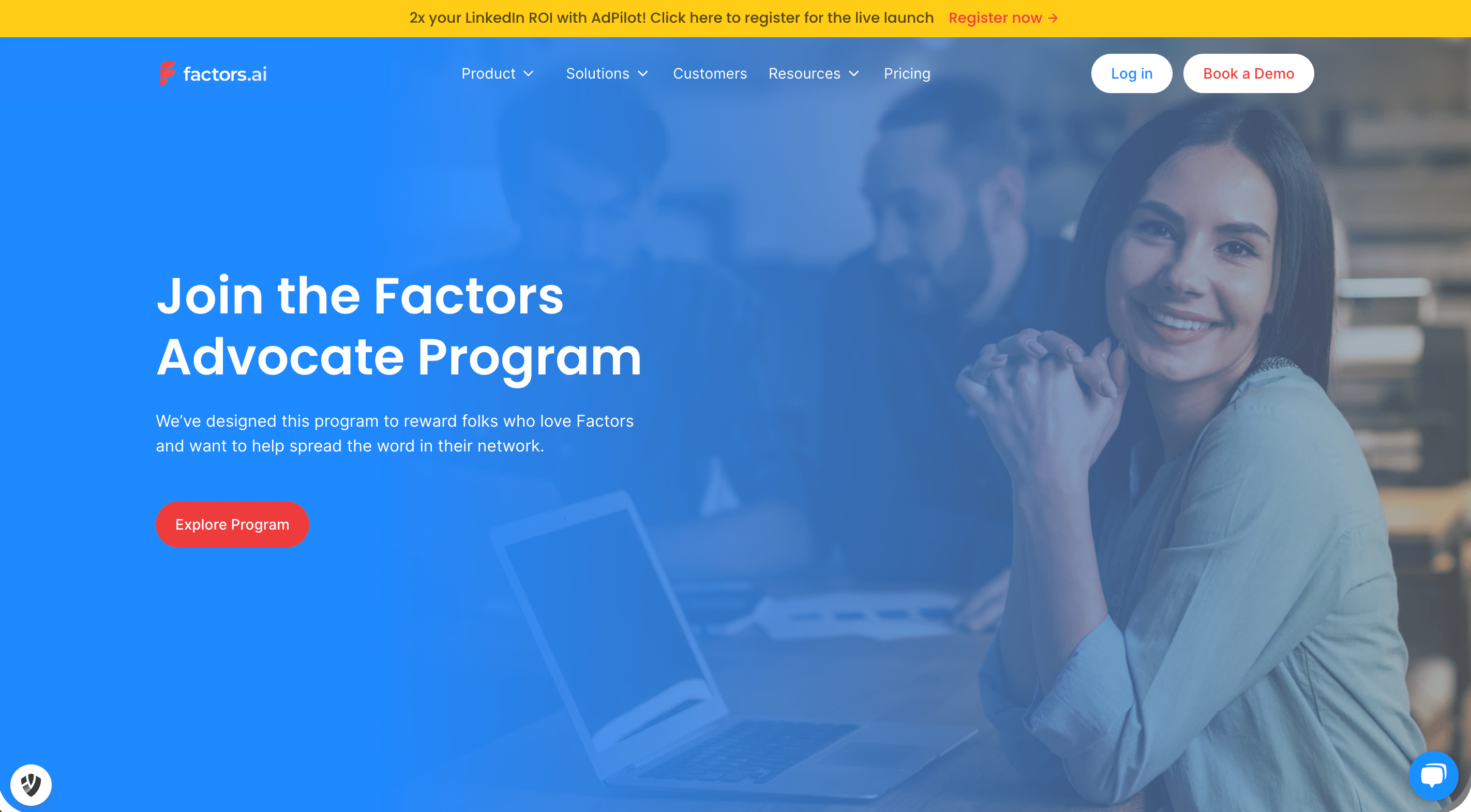
11. FactorsAI: Advocate Program
FactorsAI’s Advocate Program incentivizes users to participate in activities such as reviews, case studies, and referrals. By actively engaging customers, FactorsAI builds a community of dedicated advocates who contribute to the brand's growth.
Key Takeaway: Actively engage users through diverse advocacy activities to build a loyal community.
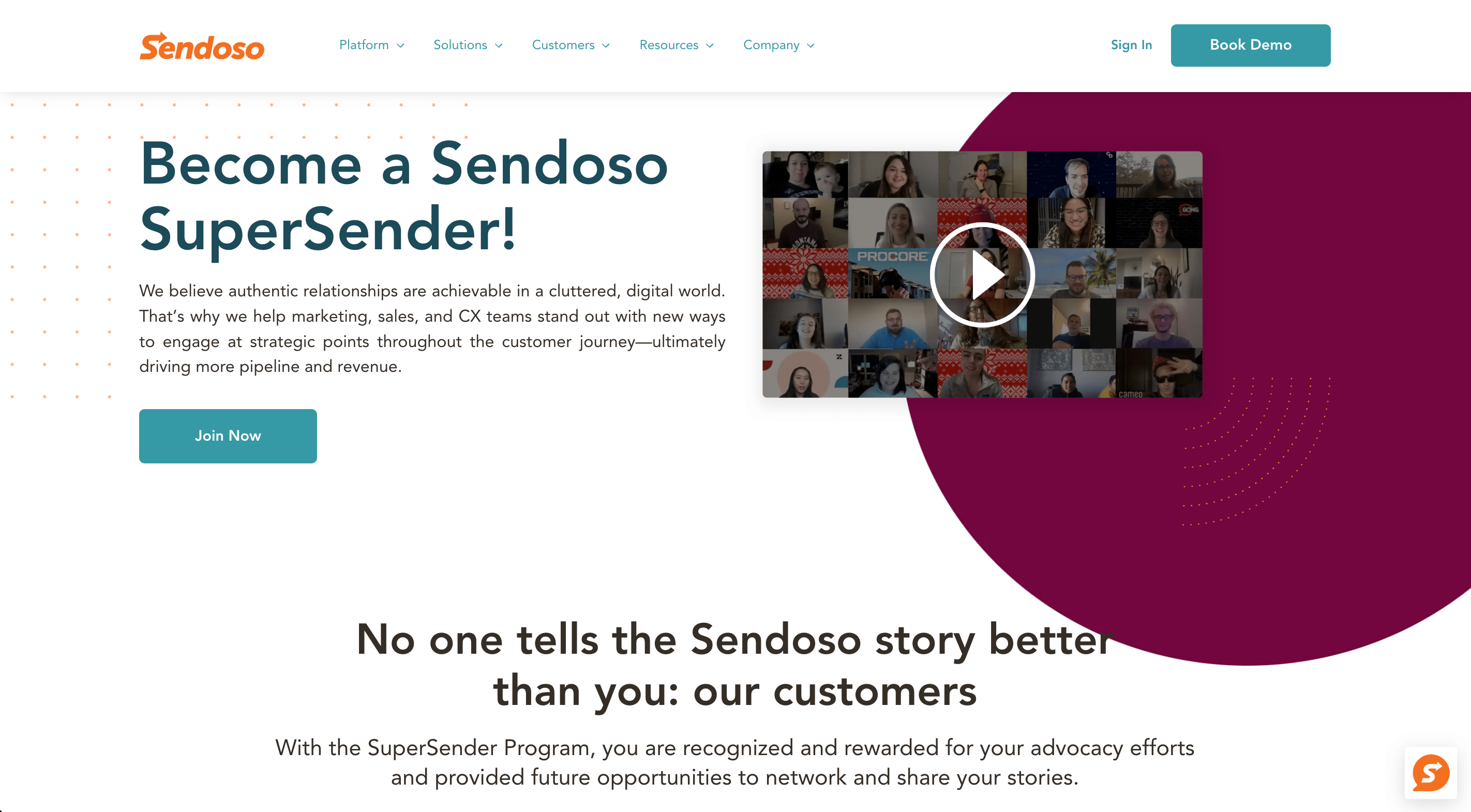
12. Sendoso: Supersender
Sendoso's Supersender program rewards top users with exclusive perks, recognition, and networking opportunities. This exclusive program keeps customers engaged and motivated to maximize their platform usage.
Key Takeaway: Offer exclusive perks and recognition to your top users to keep them engaged and motivated.
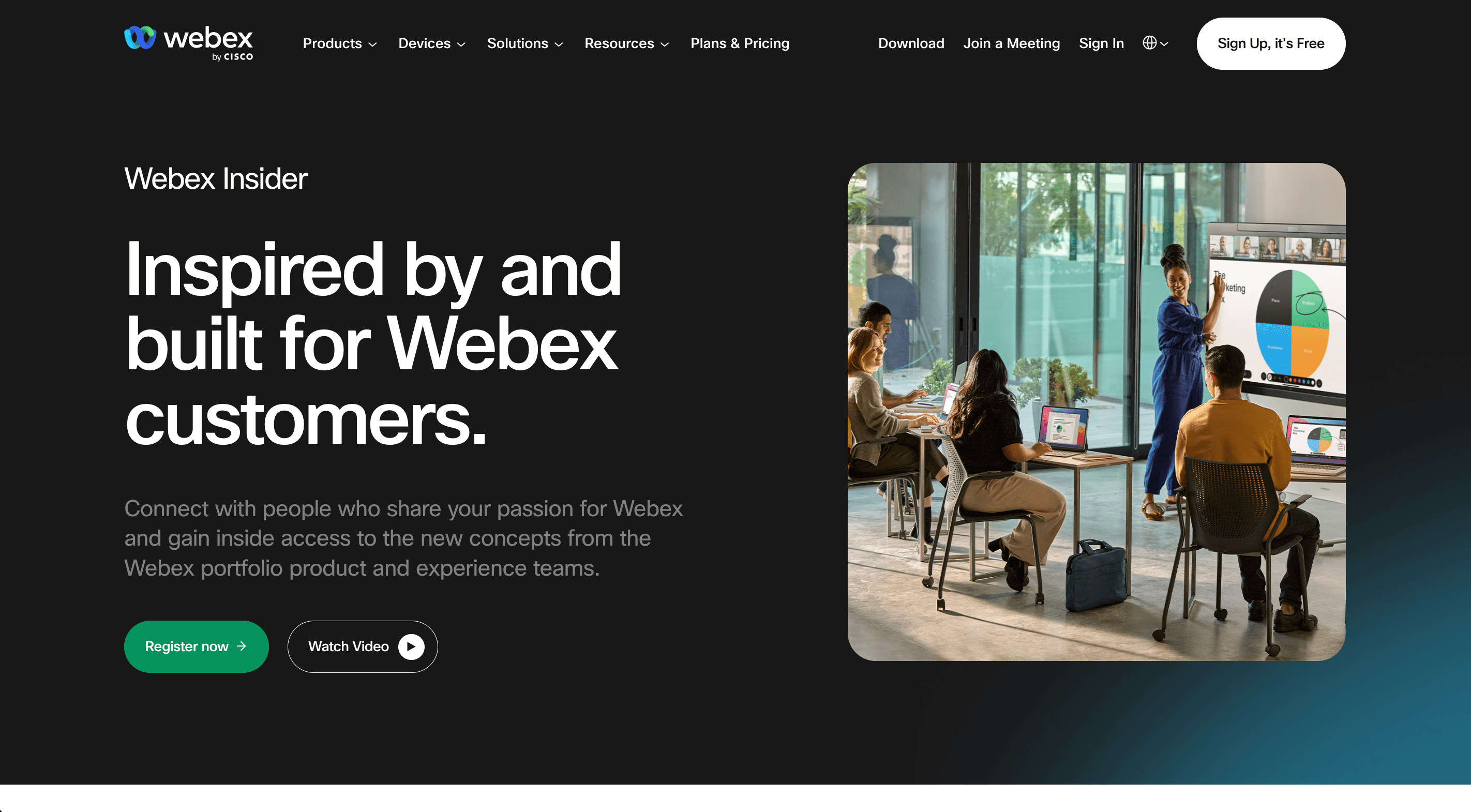
13. Webex: Insider
Webex Insider offers users the opportunity to participate in beta tests, provide feedback, and access exclusive content. This advocacy program helps Webex gain valuable customer insights while giving participants a sneak peek into future developments.
Key Takeaway: Involve users in beta testing and feedback to improve product development and customer satisfaction.
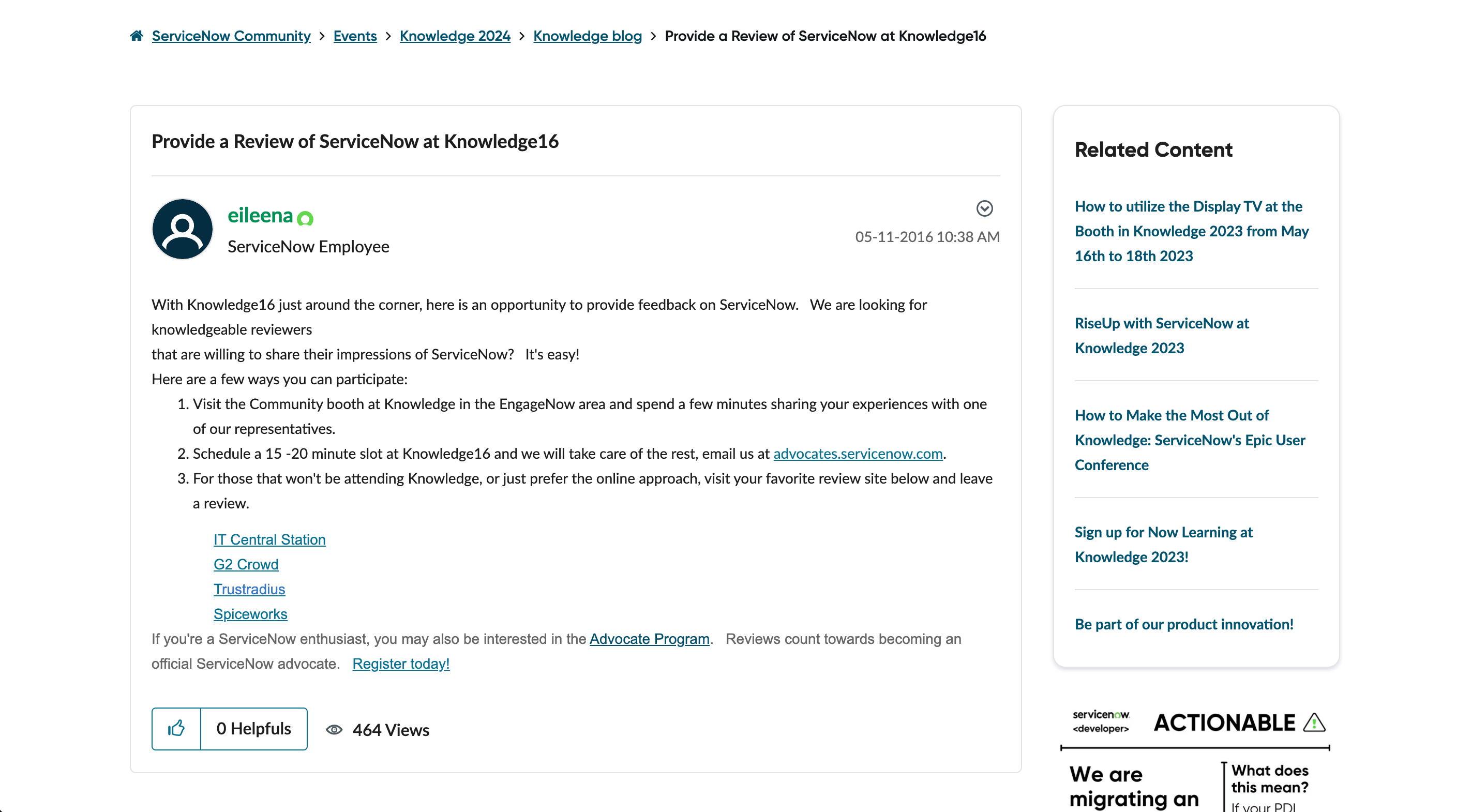
14. ServiceNow: Customer Reviews
ServiceNow's Customer Reviews program encourages users to share their experiences and insights through detailed reviews. These testimonials provide valuable feedback and help potential customers make informed decisions.
Key Takeaway: Collect detailed customer reviews to enhance your product and inform potential customers.
Designing Your SaaS Loyalty Program
When creating your own SaaS loyalty program, consider these steps:
-
Define Your Objectives: Clearly outline what you want to achieve with your loyalty program, whether it's reducing churn, increasing feature adoption, or driving referrals.
-
Understand Your Audience: Conduct surveys, interviews, and data analysis to identify what motivates your customers and what types of rewards they value most.
-
Choose Your Reward Structure: Decide whether you'll use points, tiers, or a hybrid system. Consider how rewards will be earned and redeemed.
-
Select Relevant Rewards: Offer a mix of tangible and intangible rewards that align with your product and customer preferences. This could include:
- Product upgrades or additional features
- Early access to new releases
- Exclusive content or training
- Personalized support or consulting
- Community recognition or badges
- Partner discounts or complementary services
-
Design the User Experience: Create an intuitive interface for users to track their progress, earn rewards, and understand program benefits.
-
Develop a Communication Strategy: Plan how you'll introduce the program, onboard users, and keep them engaged over time.
-
Integrate with Existing Systems: Ensure your loyalty program integrates seamlessly with your product, customer support, and marketing tools.
-
Create a Launch Plan: Develop a strategy for rolling out your program, including any beta testing or phased approach.
-
Establish Metrics and Tracking: Define key performance indicators (KPIs) and set up systems to monitor program success.
Measuring the Success of Your Loyalty Program
To ensure your SaaS loyalty program is delivering results, track these key metrics:
-
Participation Rate: The percentage of eligible customers actively engaging with the program.
-
Retention Rate: Compare the churn rate of program participants vs. non-participants.
-
Customer Lifetime Value: Measure the increase in CLV for program members compared to non-members.
-
Net Promoter Score (NPS): Monitor changes in NPS among program participants.
-
Feature Adoption: Track increases in the use of specific features or modules tied to program incentives.
-
Referral Rate: Measure the number and quality of referrals generated through the program.
-
Upgrade Frequency: Monitor how often program participants upgrade their subscriptions or purchase additional services.
-
Engagement Metrics: Track specific actions like logins, time spent in the product, or community contributions.
-
Reward Redemption Rate: Analyze how often and which rewards are being redeemed.
-
Return on Investment (ROI): Calculate the overall financial impact of the program, considering both costs and benefits.
Common Pitfalls to Avoid
When implementing a SaaS loyalty program, be wary of these potential pitfalls:
-
Overcomplicated Structure: Keep the program easy to understand and participate in.
-
Irrelevant Rewards: Ensure rewards are valuable and aligned with customer needs.
-
Lack of Personalization: Avoid a one-size-fits-all approach; tailor experiences when possible.
-
Insufficient Communication: Regularly remind users about the program and their progress.
-
Neglecting Data Privacy: Be transparent about data collection and use, and ensure compliance with relevant regulations.
-
Failure to Evolve: Continuously gather feedback and be prepared to adapt your program over time.
-
Ignoring Customer Support: Ensure your support team is well-equipped to handle program-related inquiries.
-
Underestimating Resources: Allocate sufficient resources for program management and technology infrastructure.
Future Trends in SaaS Loyalty Programs
As technology and customer expectations evolve, so too will SaaS loyalty programs. Keep an eye on these emerging trends:
-
AI-Powered Personalization: Leveraging artificial intelligence to deliver hyper-personalized rewards and experiences.
-
Integration with Customer Success: Aligning loyalty programs more closely with customer success initiatives to drive product adoption and value realization.
-
Blockchain-Based Rewards: Using blockchain technology to create more secure, transparent, and potentially transferable reward systems.
-
Eco-Friendly Initiatives: Incorporating sustainability-focused rewards or donations to appeal to environmentally conscious customers.
-
Cross-Platform Collaboration: Partnering with complementary SaaS providers to offer joint loyalty programs or shared rewards.
-
Virtual and Augmented Reality Experiences: Offering unique VR/AR rewards or experiences for top-tier customers.
-
Predictive Analytics: Using data to anticipate customer needs and proactively offer relevant rewards or interventions.
Conclusion
A well-designed SaaS loyalty program can be a powerful tool for driving customer retention, increasing engagement, and fostering a community of brand advocates. By understanding your customers' needs, aligning rewards with your business objectives, and continuously optimizing based on data and feedback, you can create a loyalty program that not only retains customers but turns them into passionate promoters of your brand.
Remember, the most successful SaaS loyalty programs go beyond simple transactional rewards. They create emotional connections, provide genuine value, and enhance the overall customer experience. As you design and implement your loyalty strategy, focus on creating a program that truly resonates with your users and reinforces the unique value proposition of your SaaS offering.
By leveraging the examples and strategies outlined in this guide, you'll be well-equipped to create a SaaS loyalty program that sets your business apart and drives sustainable growth in an increasingly competitive landscape.






